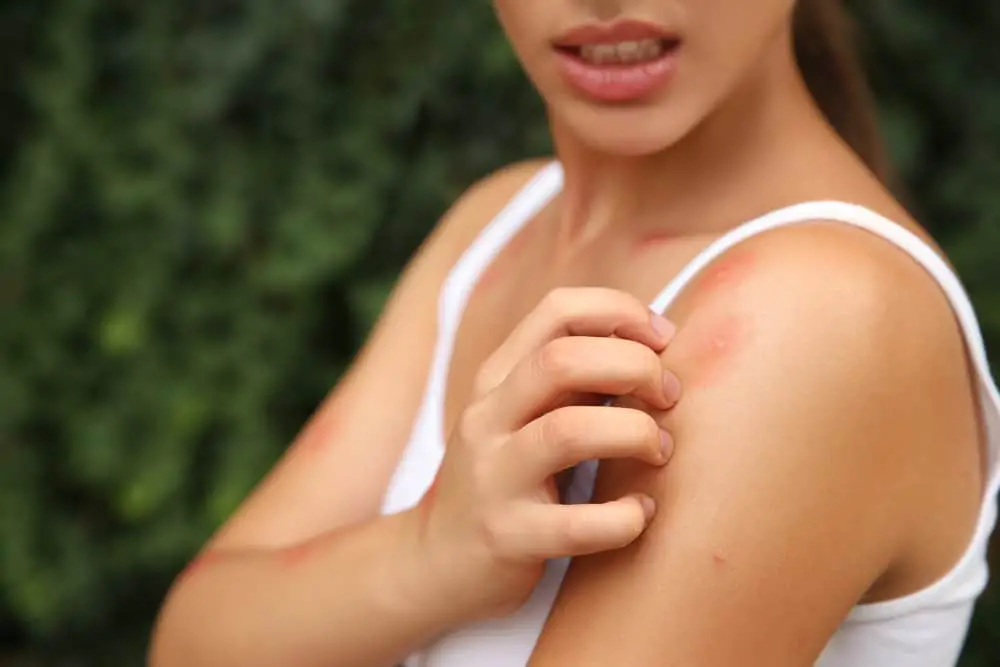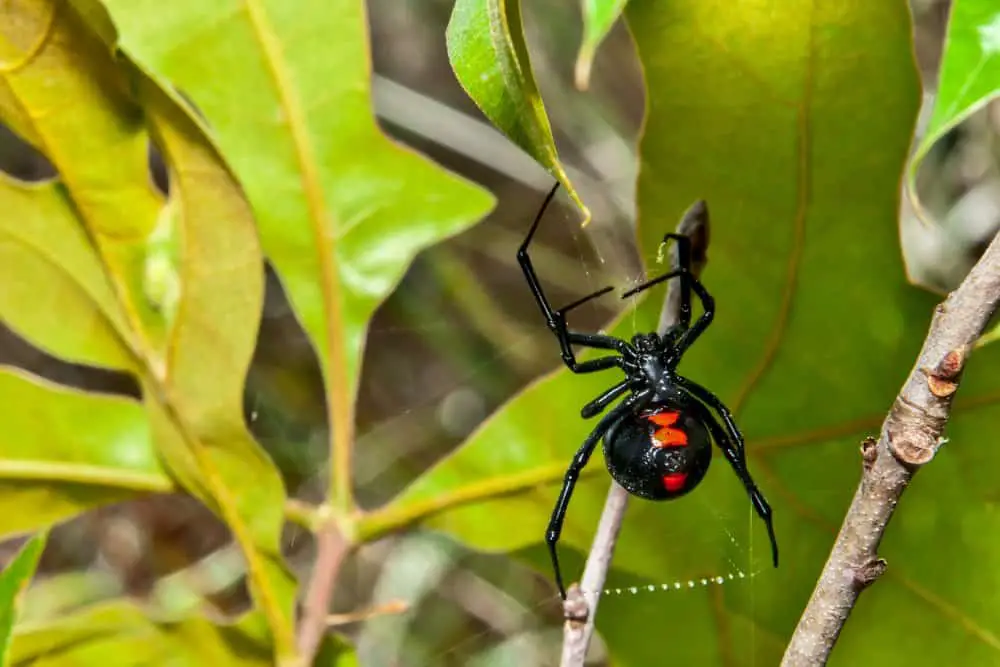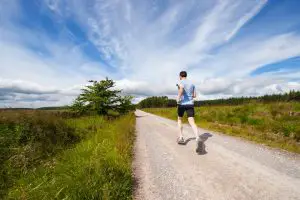Tiny Killers: 5 Small Dangerous Animals to Watch Out For While Hiking

There are few things more enjoyable in life than heading out to the woods or other natural areas for a hike. Getting away from the constant hustle and bustle of the city can help to reduce your stress and keep your mind calm. Of course, hiking is also a great form of exercise that you can benefit from. So, while it is undoubtedly true that hiking is a healthy activity to enjoy, there are also some hazards to watch out for.
Most people are well aware of common dangers in the woods like bears, coyotes, falling off a cliff, and getting lost. While these can be very serious, they are far from the only things to watch out for. In fact, some of the things that can be the biggest dangers to hiking are actually quite small (or even microscopic). When preparing for your next hike, make sure to take the following ‘tiny killers’ into account.
Quick Links
Ticks
Ticks are small, reddish-black insects that latch onto humans and burrow into the skin. They are generally found in moist areas with lots of water, but not exclusively. They can be picked up just about anywhere in the wild.
Normally, they are not too much of a problem. So if you do happen to get a tick bite, don’t panic. Remove the tick, clean the area with soap and water, and keep an eye on it for a few days. If you develop a rash or fever, see a doctor immediately because it could mean Lyme disease.
You also need to be aware that ticks can attach themselves to your clothes, so do a full-body check when you get home from your hike. I learned this the hard way after coming home and wondering why there was an itch on my leg. Wasn’t until after I took my jeans off later that night that I saw a tiny tick burrowed into my skin. Didn’t even feel a thing when it latched on to me. Thankfully, I tested negative for Lyme.
Lyme disease isn’t usually a fatal disease, but it can cause numerous health issues with lingering effects throughout your lifetime. There is no known cure, so be preventative and do not make yourself vulnerable to ticks. While walking through the wild, keep your legs covered with long pants. If you’re out a lot, do “tick checks” every morning and night by surveying your entire body. If you do find one on your body, use tweezers to grasp the tick firmly and close to the base of where it is burrowed and pull upward. Check the site to make sure all of the tick has been removed.
Honests, Wasps, and Bees
Venomous bee stings cause more deaths per year than snake bites. Even if you don’t think you’re allergic to bees, be on the defense, as there are numerous varieties of bee species, and allergies can develop later in life.
To be preventative, avoid wearing purple, violet, or blue on your clothing which may attract bees. Also, avoid scented fragrances like perfumes and flowery lotions. Keep Benadryl on you, and if you’re allergic, be sure to have an EpiPen at the ready and a partner who knows how to give it to you, if needed.
If you are stung, make sure the stinger is removed from your skin. You can scrape it out with your fingernail or carefully using the tip of a multitool knife. Use Benadryl or another antihistamine to comfort the site of the sting if swelling or itching happens.
As for wasps and hornets, they aren’t as common in the woods, but if you see one, beware. Their stings can be just as painful and dangerous as bees, so take the same precautions. And unlike bees whose stings are fatal to them, a wasp can sting as many times as its little heart desires.
Spiders

The vast majority of spiders are completely harmless to humans and are actually beneficial because they eat insects. Here in Texas, we see quite a few daddy longlegs, and although they look creepy, they’re harmless. However, there are a few species that can cause serious issues with a bite.
The most dangerous spider in North America is the black widow. These spiders are small, shiny, and black with a red hourglass shape on their abdomens. They kind of look like Spiderman, but in spider form. The venom from their bites can cause cramping, fever, and in some cases even paralysis.
Another dangerous species is the brown recluse. As its name suggests, this spider is brown and reclusive. It likes to stay hidden away in dark places like closets and shoes. They are small, about the size of a quarter, with a fiddle-shaped marking on their backs. A bite from one of these can cause a nasty rash and even necrosis, which is when the tissue around the bite dies.
If you are bitten by a spider, the best thing to do is to clean the wound with soap and water and apply a cool compress to help with the swelling. If you start to feel ill, have trouble breathing, or develop a rash, seek medical attention immediately.
Mosquitoes
We all know mosquitoes are annoying little bugs that suck our blood and leave us with little itchy bumps. But beyond that minor annoyance, they can also be fatal disease transmitters.
The West Nile virus is carried by mosquitoes and it affects the human brain and spinal cord, making it sometimes fatal disease. Be diligent about preventing mosquito bites by applying a bug spray containing DEET and wearing long sleeves and pants.
They also can transmit other diseases like Zika, malaria, and dengue fever. So, as you can see, it’s important to take measures to prevent mosquito bites.
Snakes
Okay, so snakes aren’t that small, but they can be small enough to curl into your boots, so I’m including them.
Of all the tinier threats in the wild, snakes are probably the most feared. But not all snakes are venomous and even the ones that only cause serious harm a small percentage of the time. If you’re bitten by a venomous snake, it’s important to act quickly and get to a hospital as soon as possible for treatment. In the meantime, keep the affected limb immobilized and below the level of your heart.
If you’re in an area with lots of snakes, the best thing to do is to avoid them altogether. Be aware of your surroundings and watch where you step. If you see a snake, give it a wide berth and don’t try to handle them.
Bacteria
Lastly, Bacteria. Why did I add bacteria to this list? Well, first off, bacteria are living organisms. So although they aren’t animals, they are still alive. Secondly, some bacteria can cause serious illness or even death.
Bacteria are single-celled organisms that can be found everywhere on earth. They are in the air, in the water, and even on our skin. Most of them are harmless or even beneficial, but there are a few that can cause serious illness.
One of the most dangerous is Clostridium botulinum. This bacteria produces a nerve toxin that can cause paralysis and even death. It’s mainly found in low-oxygen environments, like canned goods, but also found in soil and dust. So make sure to wash your hands after being outdoors.
Another dangerous bacteria is E. coli. This one is found in contaminated water and food. It can cause severe diarrhea, vomiting, and even death. This is the reason water purifiers exist. Whatever you do, DO NOT drink from water sources such as rivers, or lakes unless you purify it first.
For people who are elderly or have compromised immune systems, to begin with, bacterial water is a deadly threat. Be prepared by bringing an abundance of clean water or proper equipment for filtering water.
Conclusion
Whenever going out on a hike, no matter how long or short, preparation is the most important step you take. Making sure to dress appropriately and bring all the gear that you will need to complete your journey safely will ensure you not only have a very enjoyable experience but that you come back safe and healthy too.






